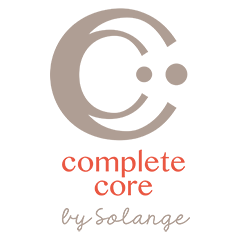Strengthening exercises are an important piece of a prenatal exercise program. Strengthening exercises give your muscles postural stability and support for the growing baby. They help to balance the laxity in joints and ligaments that occurs from the increase in pregnancy hormones. Strength is necessary due to the increased demand on a woman’s body from weight gain, increased curves of the spine and changes in center of mass.
Before you begin make sure you have the following:
· Clearance from your OB/Midwife
· Ideally you have started your training before you got pregnant
· Guidance from a trainer specializing in prenatal or a prenatal class
· Modifications and props
The first trimester is the most crucial time for development of the fetus. This is where you want to be careful and respect the changes going on inside your body. The general guidelines for the first trimester are to avoid exercises that compress the uterus (crunching and excessive twisting), avoid staying on your back for prolonged amounts of time, and not to overdo it. This is the time to do more of a feel good workout and respect the fatigue and nausea that you may be experiencing. An increased rest period between exercises can be beneficial. Walking is one of the best forms of exercise at this time.
A strengthening program begins with the core and understanding the core as it relates to pregnancy. The core is the relationship between the Diaphragm, Transverse Abdominis (deepest layer of the abdominal muscles that corsets around the waist), Pelvic Floor, and Multifidus. This system of muscles gives support to our internal organs, pelvic contents and growing baby. It is responsible for bowel and bladder function and sexual appreciation.
Photo credit: Le Claire Photography
To connect to your core first practice diaphragmatic breathing and feel for the movement of the pelvic floor with the breath cycle. Learn how to coordinate the pelvic floor contraction with the breath cycle. The relaxation and elongation of the pelvic floor is equally as important.
There is a postural system made up of key muscle groups that provide stability to the pelvis and rib cage, which works together with diaphragmatic breathing. These include the pelvic stabilizer Gluteus Medius and Scapula Stabilizers (Rhomboids, Serratus Anterior, and Lower Trapezius). Develop an awareness for these muscles in your postural system.
Lastly, we have a system of larger muscles groups called prime movers. These muscles are responsible for movement including bending and lifting (IE squats and lunges). In order for the core to be functioning well, the smaller postural muscles need to work in harmony with the larger prime movers.
It’s hard to visualize what core work looks like in pregnancy. Core work is often thought of as just the abs, doing exercises lying on your back or in plank position. There are many positions that are available in pregnancy including sitting, side lying, all fours, standing, using resistance tubing and bands, and most importantly breathing. It is important to work the core in all of these functional positions.
Photo credit: Le Claire Photography
Stretching is another important part of a strengthening program. Normal pregnancy weight gain places an increased demand on muscles and joints. As the body adapts and figures out how to carry this additional weight, muscles tend to get sore. Focusing on a good stretching program can help to alleviate aches and pains. A good stretching program gives the body mobility. In order to be strong, muscles need to move through a full range of motion. Stretching is also a great way to allow your body to relax at the end of the day.
Key areas to focus on include:
· Calves
· Quads
· Hamstrings
· Erector Spinae
· Gluteals/Piriformis
· Iliotibial Band
Make sure you know the red flags. These are signs and symptoms of when you should call your doctor.
· Vaginal bleeding
· Persistent nausea or vomiting
· Excessive shortness of breath
· Leaking amniotic fluid
· Painful uterine contractions
Do you have a question about an exercise in your prenatal program? Ask Solange by email or leave a comment below.



